1.5 Million Sunflowers and more Hells
Today we drive from Asahikawa to Norbrietsu, a hot springs town.
But the most exciting thing is on the way.
We get to see a field of sunflowers!!! I’m so excited!! Sunflowers are special to the Bears because Papa Bear and I had sunflowers for our wedding! It’s my favorite flower.
Hokuryu Sunflower Festival happens every summer, typically from late July to August, showcasing over 1.5 million sunflowers in vast fields. The flowers are planted by everyone in the town, and magically there is no entrance fee for this spectacle!
Sunflower in Japanese is called himawari (ひまわり or 向日葵). The word "himawari" translates to "sun-facing flower." As the photographer takes photos for people in front of fields of sunflowers, he tells them to say “himwari” instead of cheese. So we also say “himwari” as we snap our photos.
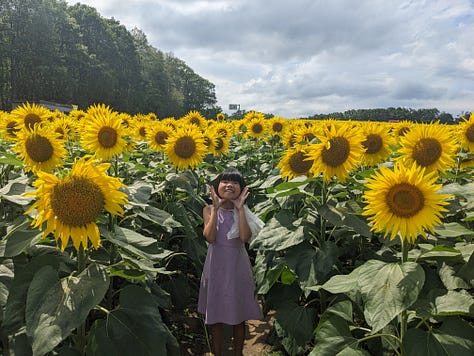
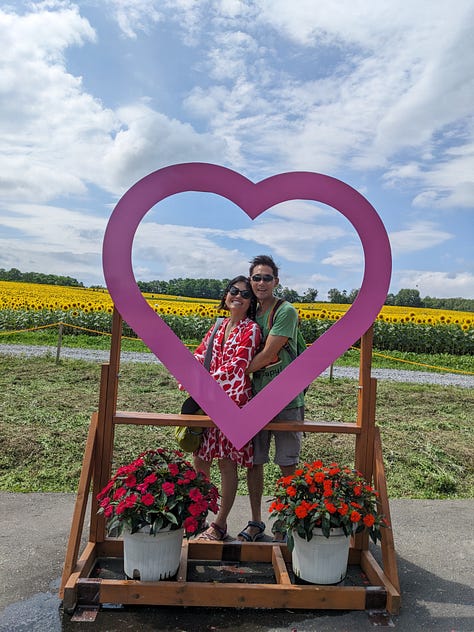
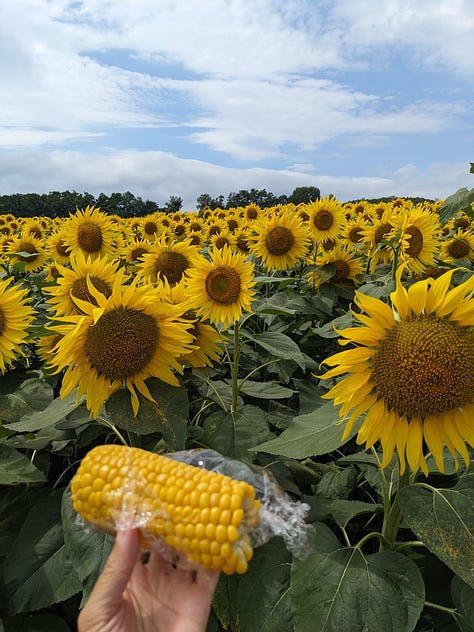
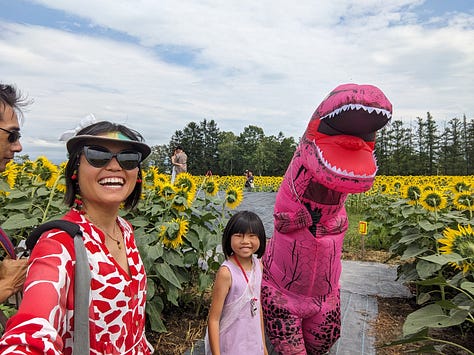
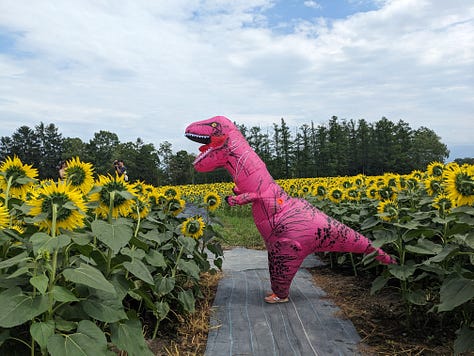
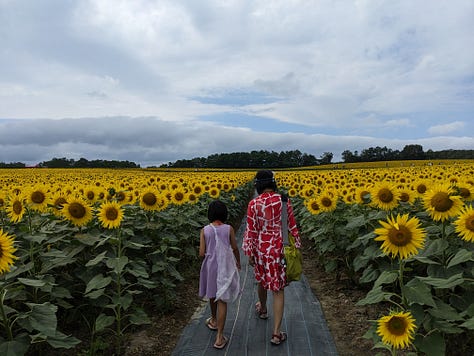
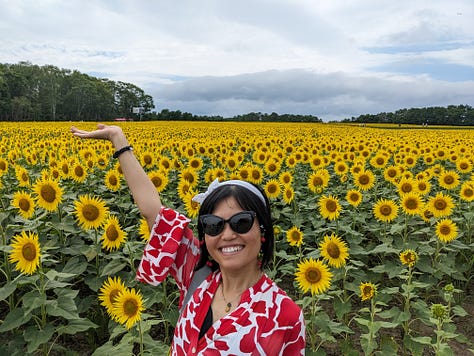
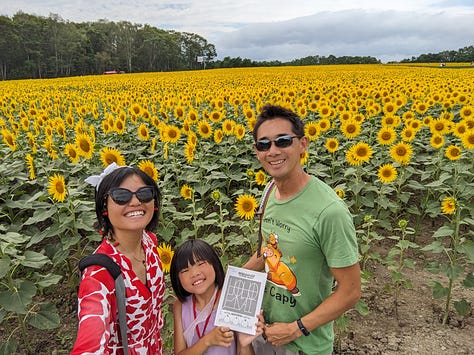
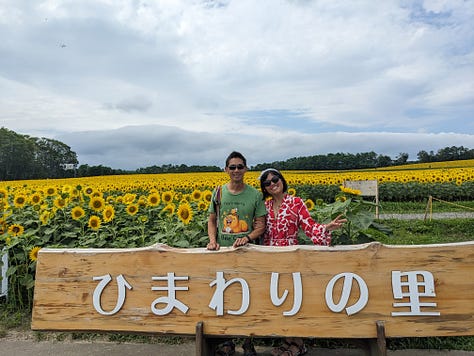
You may notice a pink dinosaur in our photos. We find him in the maze. Yes, they have two mazes. And for a small fee, you can go inside and find all the stamps. They’re similar to corn maze in the US, but of course, much much better because it’s amongst sunflowers!! I also brought corn to eat in the sunflower maze, somehow feels right. Then this guy’s pink dinosaur head pops up above the maze, it’s so cute and awesome. We have to go find him and take a photo with him as well. Achieved!
Noboreitsu
After sunflowers, we head to Nobrietsu for the night. At the highway exit we find the devil welcoming us, so we take a photo with him.
Then we check into our rental. It’s a house next to a river, the stay with the most countryside feel we have all trip. It has a very large kitchen, 3 rooms, a firepit, shed storage, and a large yard. Yup, Hokkaido feels very much like the US. I take the opportunity to make a nice home-cooked meal, complete with the very Japanese “octopus sausage” made by simply cutting their sausages in the right way.
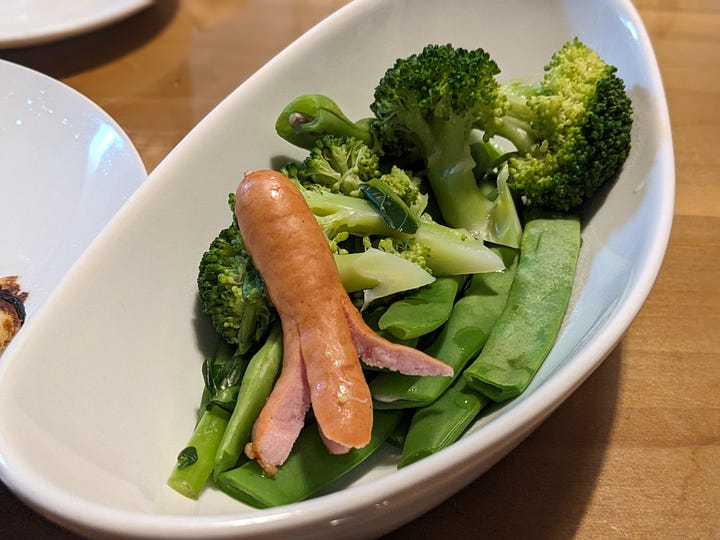
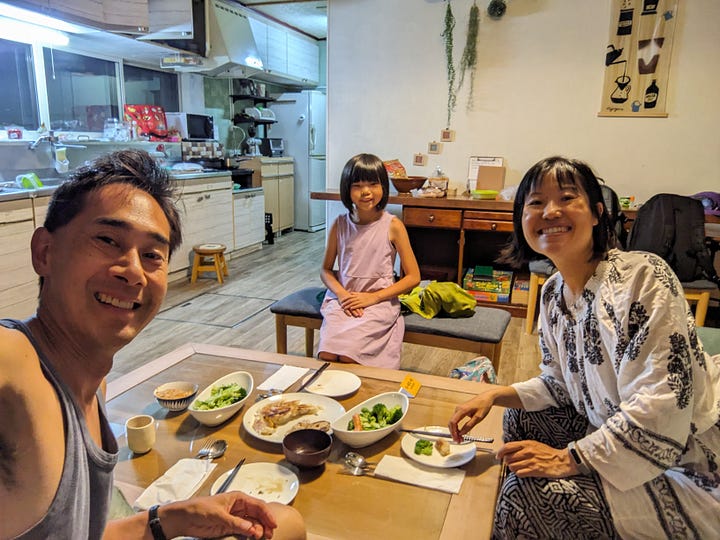
The next day we head to Noborietsu to visit more hells.
Hells, foot baths, and caterpillar bus
The main thing to see in Norbrietsu is their hells. Noboribetsu Hell Valley, known as Jigokudani (地獄谷) in Japanese, is a famous geothermal area located in Noboribetsu, Hokkaido. This valley is part of Noboribetsu Onsen, one of Japan's most famous hot spring resorts. The name "Hell Valley" comes from the otherworldly landscape, with steaming vents, bubbling sulfur pools, and volcanic activity that make the area look like a scene from hell.
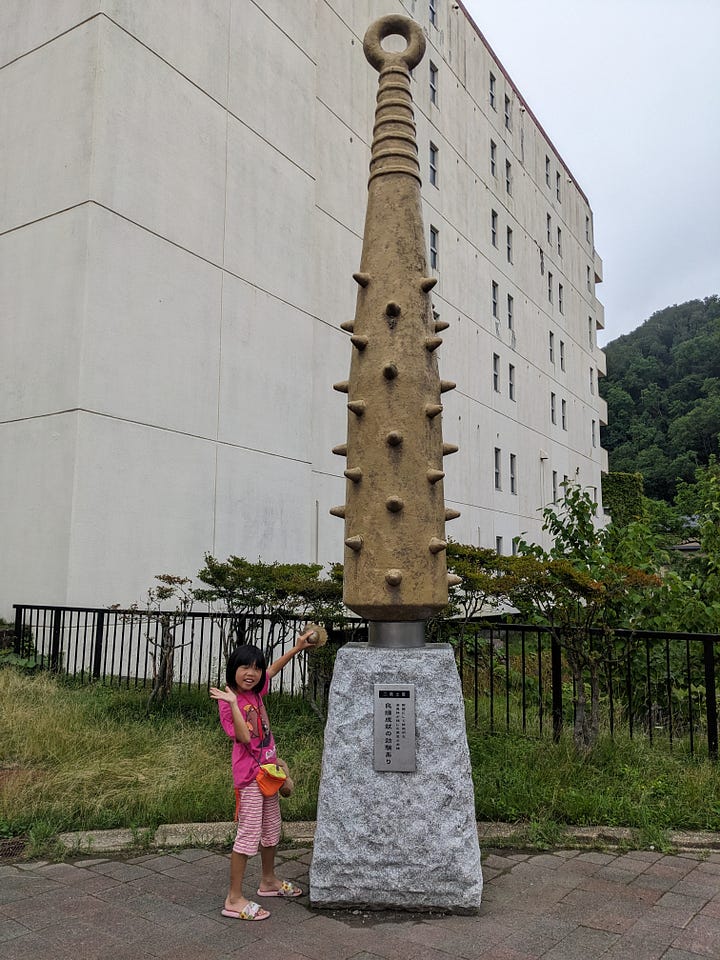
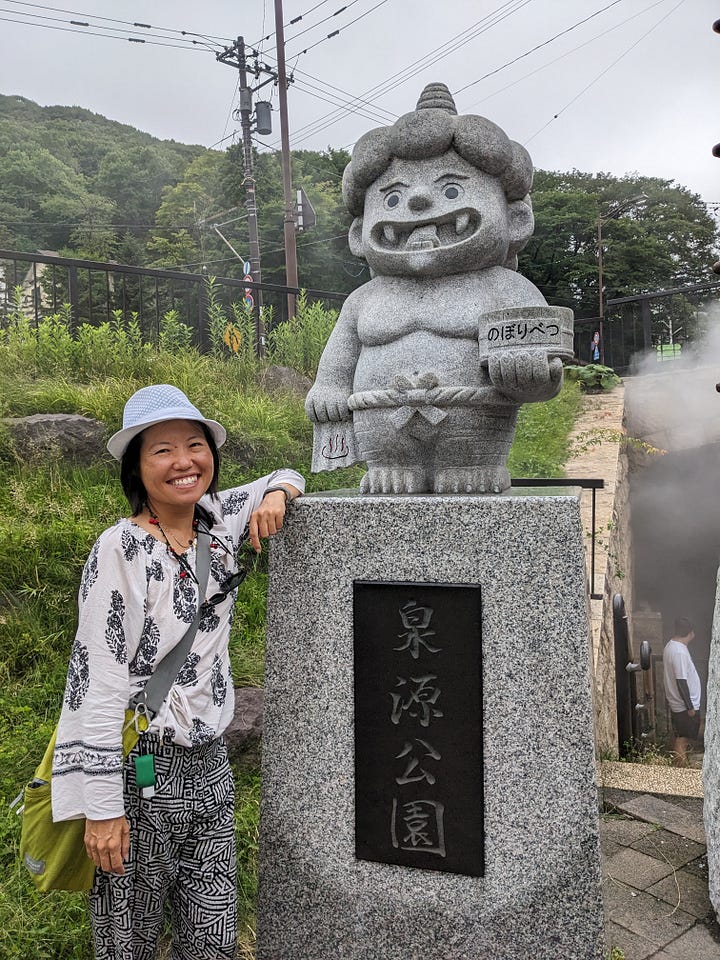
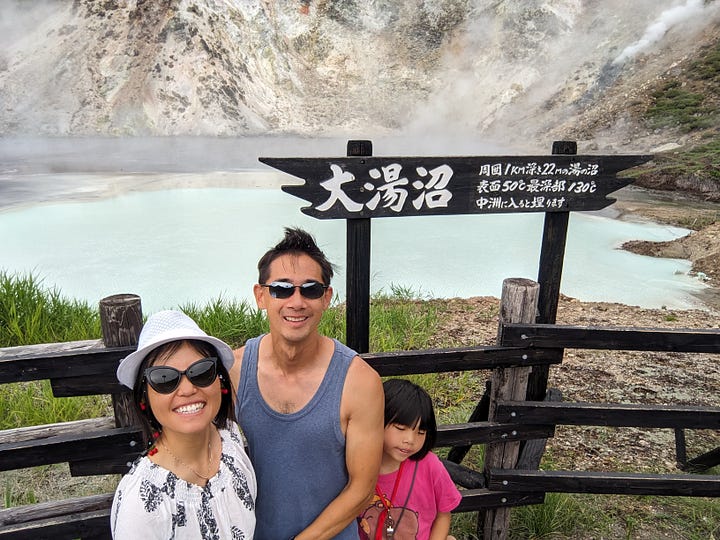
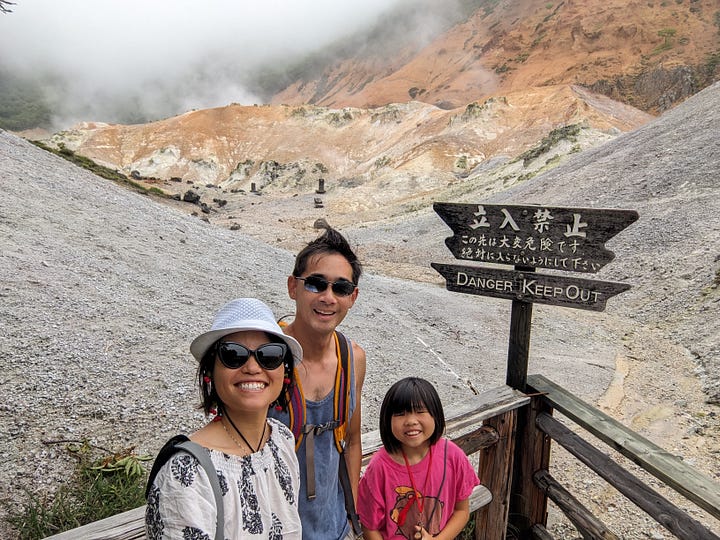
The cute little single street downtown is just 5 minute’s drive from their hells park. This one has a nice hike. In downtown, they also have a geyser that they built a car bridge right over. They seem to like putting a roof on geysers here.
For lunch, we stop at Hells Ramen place. It seems appropriate. We wait only a short while for a very well-reviewed place. We order the least spicy ramen and a non-spicy one for baby bear. It is still too spicy for me, luckily Papa Bear was able to eat it.
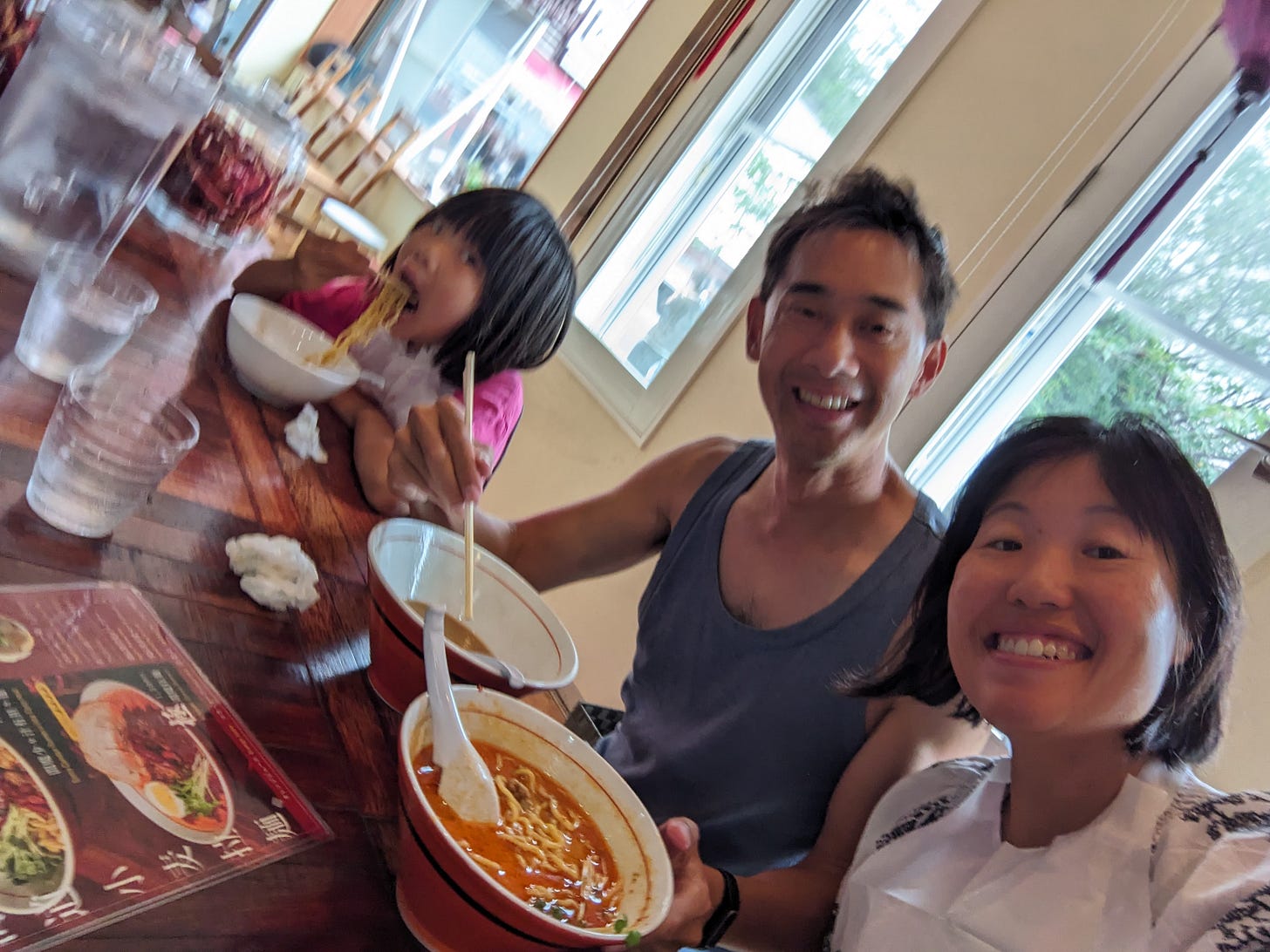
There’s a very cute bus going around town that looks like a caterpillar with all the little wheels. We really want to ride it. So we do.
The destination? Nowhere, we get dropped off right where we started. We planned on a short ride from downtown to the hells and back. But turns it goes to the hells, picks up some tourists, up the hill to the footbath area, back to the hells again, with the same tourists that got on at the hells still on the bus, before heading downtown where they drop us and those tourists off, 45 minutes later. 🤣 We did get to see a wild deer on the way though!
We drive ourselves to the foot baths next. A short hike through the woods leads to this natural river that’s at the right temperature for a foot bath. We use the most downstream portion because it’s the coolest. It’s still very hot! But Baby Bear is able to put her foot into this one.
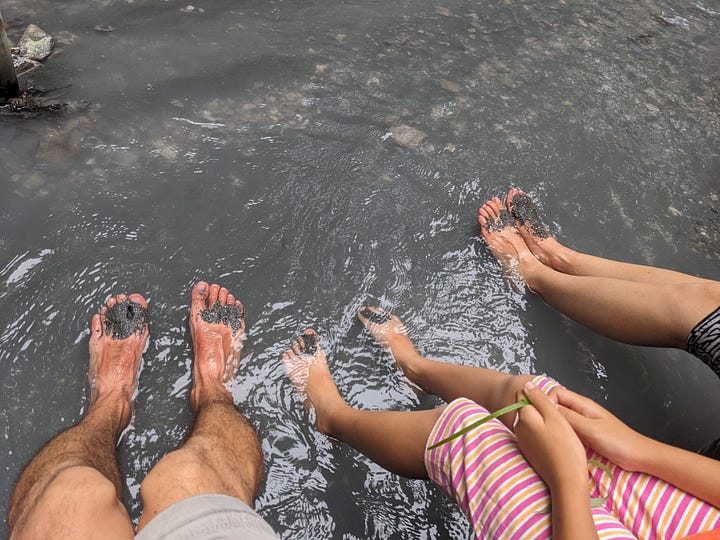
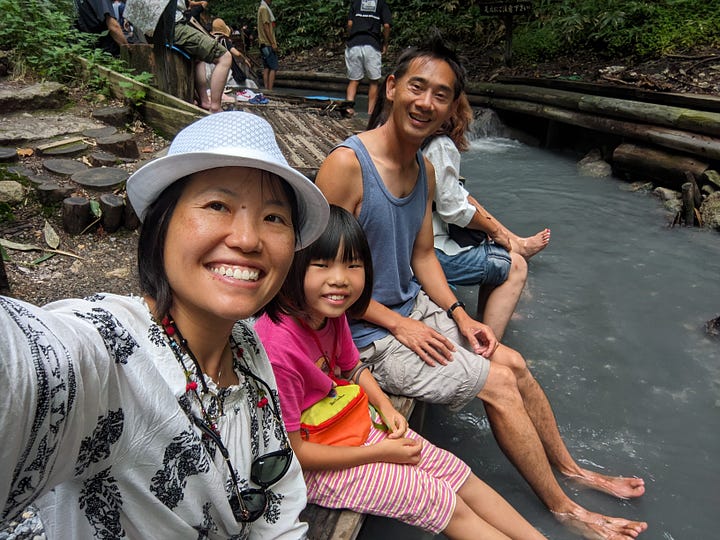
On the walk back to the car we find this very curious looking worm. With a Google Lens search we find out that it’s the hammerhead worm commonly found in Japan called Bipalium kewense, a species of flatworm from the genus Bipalium. In Japan, it is often referred to as a type of "planarian" or hiru (ヒル) in more general terms, which translates to "leech," though it's not technically a leech. This invasive species is notable for its distinct hammerhead-shaped head and its predatory behavior, primarily feeding on earthworms.
To me, it looks like a sundried tomato fettuccine.
We end the day in our cute large house and a game of Othello. One of my favorite childhood games. The best part, I win against Papa Bear, who seems to win every game we play. But this one I’m an expert and it’s new to him. I’m smart and didn’t start a second game.








